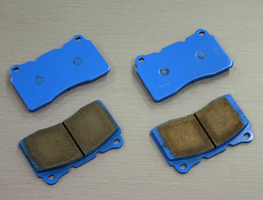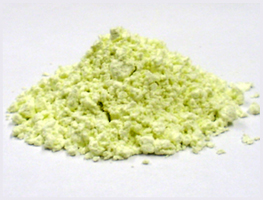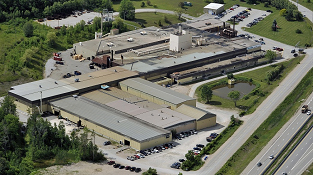The Production in North America of “Potassium Titanate” for Friction Material of Automobile — Responding to the increasing demand overseas and aiming to further expand sales —
April 23, 2012
Kubota Corporation has decided to construct a new plant to produce potassium titanate for Automobile friction material within the grounds of Kubota Metal Corporation (hereinafter referred to as KMF), a subsidiary company in Canada. Mass production is planned to start from April next year and it will respond to the expanding demand for use on automobile brake pads, particularly in North America.
Background and objective
- Kubota Corporation produces potassium titanate in plants in Japan and sells it both in Japan and overseas for use as friction material in brakes and clutches on automobiles and various types of machinery, and as a reinforcing material for plastic and metal.
- In brake pads for automobiles, there is increasing demand in North America for use on new cars and for replacements with asbestos-free items on consideration of the environment. In emerging nations too, it is predicted that the number of new vehicles produced will increase, so it is expected that demand for potassium titanate as friction material will also expand.
- For the development and expansion of our business overseas, Kubota Corporation will take a market-oriented approach and promote further expansion of our overseas production and sales. In this case, we will establish a local production base in the location where demand is expected to grow and will avoid the risks of a strong yen and also expand sales.
Outline of the new plant
| Location | Orillia City, Ontario, Canada (To be newly constructed within the existing grounds of KMF) |
|---|---|
| Scale | TXAX plant floor area: 3,600 m2 (KMF site area: 180,000 m2) |
| Total investment | 940 million yen |
| Production items | "TXAX"* (Potassium titanate for friction materials)
|
| Applications | Friction material for automobile brake pads and others |
| Production capacity | 1,000 t/ year |
| Mass production start | April 2013 (planned) |
| Employees for TXAX | Roughly 20 (at the start of operations in 2013) |
Plans for the future
In response to the increasing demand for automobile brake pad applications, particularly in North America and in Asia, we aim to double sales in TXAX products overall in the next 5 years, by launching new products and by increasing our share in the markets.
<For reference: About TXAX>
Potassium titanate is a titanic acid compound. It is characteristic for its wear resistance, high strength, high stiffness and low dielectricity and is used as friction material for automobiles, reinforcing material for plastic and metal and in precision filters.
Kubota's potassium titanate (TXAX) is an environmentally friendly material with excellent safety. It has a plate-like shape with large diameter and long fibers. The characteristics of the material include thermal resistance, heat insulation at high temperatures, wear resistance and friction stability.
It is already in use in a wide range of applications, including as friction material for brakes and clutches in various types of machinery including automobiles, as a reinforcing material for plastic and metal and as a coating agent.
-

Example applications
Friction material for automobile brake pads -

TXAX
<For reference: Outline of Kubota Metal Corporation (KMF)>
| Company name | Kubota Metal Corporation |
|---|---|
| Established | June 3, 1990 |
| Location | Orillia City, Ontario, Canada (Approx. 150 km north from central Toronto City) |
| President | Kaoru Hamada (Executive Officer of Kubota Corporation) |
| Scale | Site area: 180,000 m2, building area: 22,000 m2 |
| Capital | 15 million Canadian Dollars |
| Investment ratio | 100% financed by Kubota |
| Production items | Cast steel products (including reactor tubes for petrochemical plants)
|
| Employees | Roughly 300 |
-

External view of Kubota Metal Corporation plant